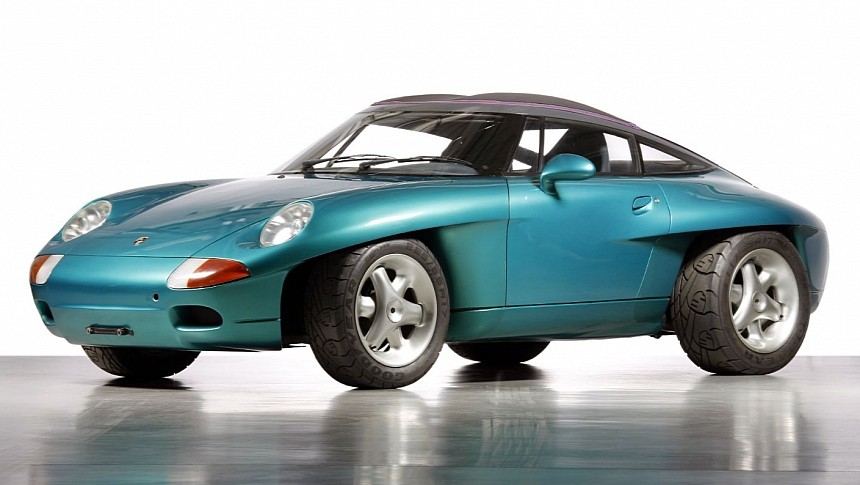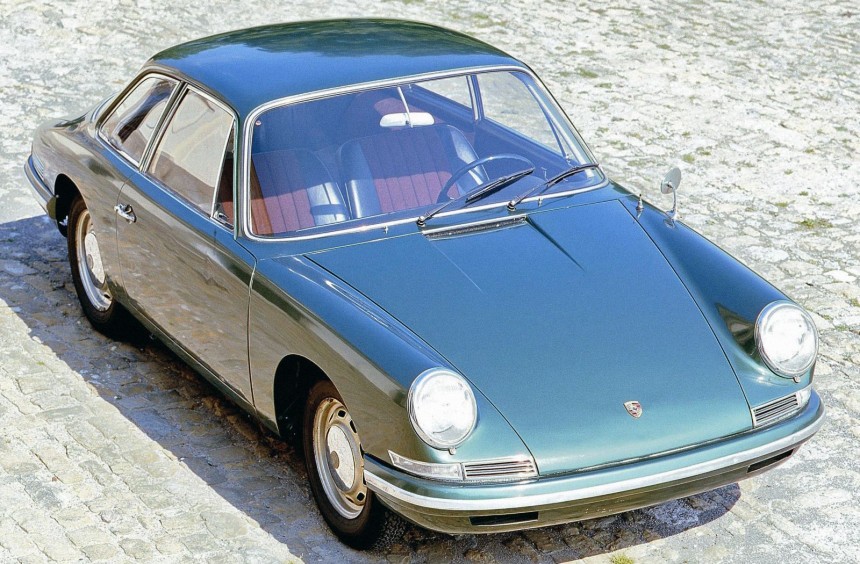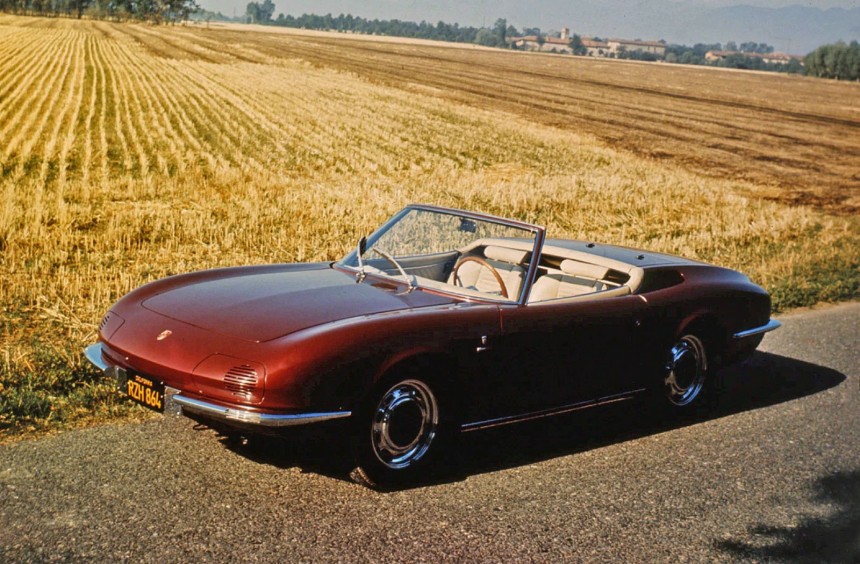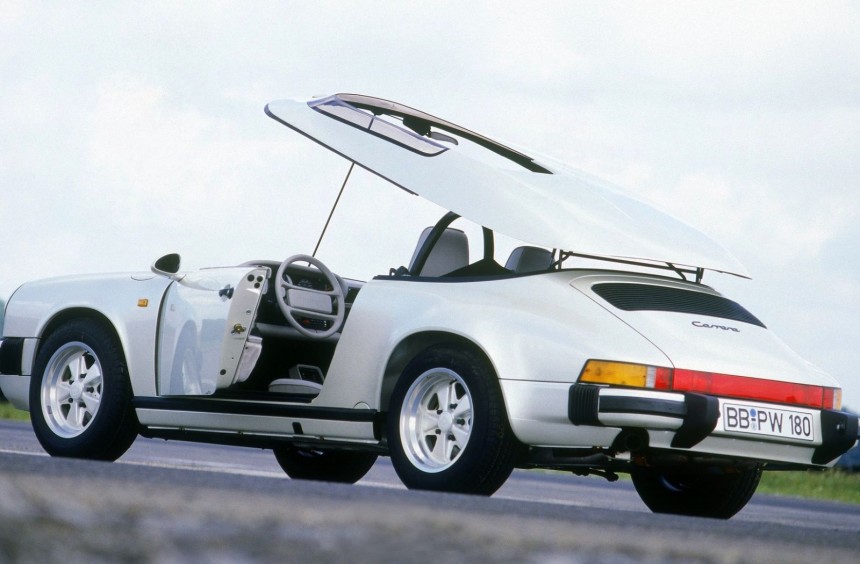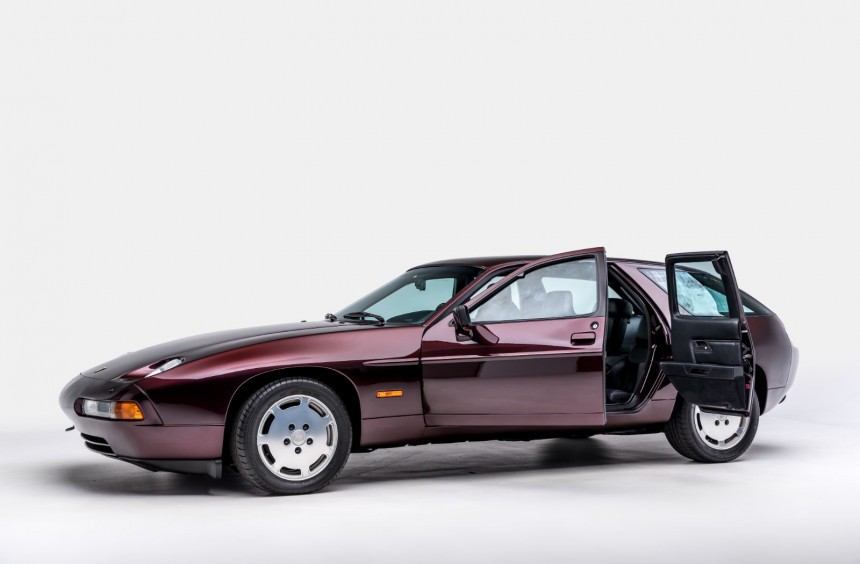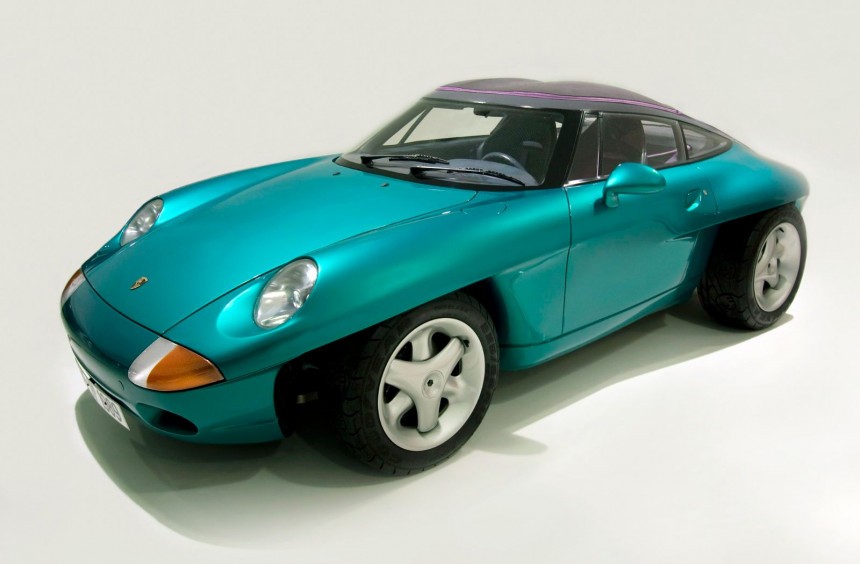Apart from its legendary road and race cars, Porsche has developed many fascinating concepts. While the modern Living Legend series is now famous, these five fascinating old-school machines are virtually unknown to the average gearhead.
The Porsche story starts with founder Ferdinand Porsche, who initially established the company (with Adolf Rosenberger's and Anton Piëch's help) to offer development and consulting services.
One of its first projects was the creation of an affordable people's car, resulting in the now-legendary Volkswagen Type 1 "Beetle".
During the Second World War, the German company developed vehicles for the army, and after the global conflict ended, it introduced the first Porsche-badged model: the 356.
While the 356 and its derivatives were successful, Porsche became one of the most respected sports car manufacturers thanks to the iconic 911 unleashed on public roads in 1963.
In addition to the 356 and 911, Porsche designed many fascinating road and race cars. A few made it into production, while most didn't go past the concept stage.
One of the earliest examples of such a Porsche concept is the weird yet wonderful T7.
Designed by Ferdinand Alexander "Butzi" Porsche from 1959 to 1961 and codenamed Typ 754, the car was built on a modified 356 chassis.
However, the styling was thoroughly revamped, and, as you can see, its front end was carried over to the future 911.
It was powered by a four-cylinder boxer enlarged to 2.0 liters and rated at 130 hp. Thanks to this engine, the lower overall weight, and streamlined bodywork, it could reportedly reach a top speed of 124 mph (200 kph).
Though it never made it into production, the T7 helped shape the 901 prototype, which became the flagship 911 in 1963.
The concept has survived in pristine shape and can now be admired at the Porsche Museum in Stuttgart.
The original 911 was a resounding success but was only available as a coupe for the first two years.
Buyers who wanted a drop-top Porsche, particularly those living in the warmer parts of the US, had to settle for a 356 C, which was still in production.
Still, more and more Porsche dealers demanded a convertible 911, but Porsche gave them the 911 Targa in 1965 since a regular convertible body proved to have serious rigidity flaws.
Concerned that the Targa wouldn't sell as well as the regular convertible that customers were demanding, West Coast distributor John von Neumann convinced Ferry Porsche to allow the development of a new prototype.
After receiving the green light (and a 911 chassis in white) from Porsche, von Neumann traveled to Italy, where he commissioned Nuccio Bertone to build a true drop-top 911 that would appeal to the American buyer.
The result was a completely redesigned, handbuilt body that bore no resemblance to the 911. Instead, Bertone went for a wider, low-slung spyder design that, although different, was unquestionably gorgeous.
Powered by a 130-hp flat-six, the Italian 911 was unveiled at the 1966 Geneva Motor Show, but due to the high manufacturing cost, it never made it into production.
In 1954, Porsche developed the lightweight 356 Speedster with a cut-down windshield, which quickly became America's favorite weekend racer thanks to North American importer Max Hoffman.
Thirty years later, the carmaker began toying with the idea of bringing back the Speedster on the 911 platform, and to this end, it designed several exciting prototypes.
Arguably, the craziest of all 1980s Speedster prototypes was the 911 Carrera 3.2 Speedster unveiled at the 1987 Frankfurt Motor Show.
As the name implies, it was based on a 911 Carrera 3.2 convertible. Yet, instead of the conventional windshield and foldable top, the lightweight concept featured a wacky fiberglass tonneau with a slim built-in windshield.
Like the race cars of the 1950s, the tonneau covered all but the driver's side of the cockpit. Weirdly enough, it had to be lifted manually to allow the driver to climb inside the car.
Though it didn't make it into production in this form, the concept laid the groundwork for the 911 Speedster that did - albeit the final production version featured a fiberglass rear seat cover and a smaller, more conventional windshield.
Before the Cayenne SUV was introduced in 2002, all mass-produced, street-legal Porsches had only two doors.
Though the Chayenne was initially met with vigorous protest by Porsche purists, it became a strong seller and paved the way for the Panamera - the manufacturer's five-door, 911-styled production road car.
But if you think the Panamera was the road car with more than two doors ever designed by Porsche, you're sadly mistaken.
That title goes to the 1987 Studie H50, a long-wheelbase version of the 928 that featured two additional suicide doors in the rear.
The concept came into being as Porsche was experimenting with a luxurious, family-oriented road car, resulting in the shooting brake-style proto-Panamera you see above.
Of course, the market wasn't ready for such a Porsche in 1987, so the design study never made it past the concept stage.
The H50 was followed up by the 911-based 989 four-door concept of 1988, which would eventually morph into the mass-produced Panamera a decade later.
The gorgeous Panamericana was conceived in 1989 to highlight some design cues of the future 993 911 generation and give Ferry Porsche a memorable present for his 80th birthday.
The coolest 20th-century Porsche concept (at least in my opinion) was built around a 964-gen 911 Carrera 4 convertible chassis with a 247-hp, air-cooled flat-six.
Its stunning body was built from a mix of fiberglass and carbon-fiber panels, and its unconventional wheel wells were designed to accommodate bigger wheel and tire combos.
Therefore, this amazing 4WD Porsche could be theoretically transformed into a legitimate off-roading sports car by just swapping the bespoke Speedline wheels with bigger ones and tweaking the adjustable shocks.
Named after the prestigious Carrera Panamericana border-to-border rally race that Porsche won several times during the 1950s, the car was presented to a visibly displeased Ferry Porsche on his 80th birthday.
Though the founder's son wasn't very fond of it (to say the least), the Panamericana was excited at the 1989 Frankfurt and Tokyo motor shows, prompting the company to consider a limited production run.
Unfortunately, that never happened, and this fantastic concept made its way to the Porsche Museum, where it currently resides.
One of its first projects was the creation of an affordable people's car, resulting in the now-legendary Volkswagen Type 1 "Beetle".
During the Second World War, the German company developed vehicles for the army, and after the global conflict ended, it introduced the first Porsche-badged model: the 356.
While the 356 and its derivatives were successful, Porsche became one of the most respected sports car manufacturers thanks to the iconic 911 unleashed on public roads in 1963.
In addition to the 356 and 911, Porsche designed many fascinating road and race cars. A few made it into production, while most didn't go past the concept stage.
1961 Porsche T7
Designed by Ferdinand Alexander "Butzi" Porsche from 1959 to 1961 and codenamed Typ 754, the car was built on a modified 356 chassis.
However, the styling was thoroughly revamped, and, as you can see, its front end was carried over to the future 911.
It was powered by a four-cylinder boxer enlarged to 2.0 liters and rated at 130 hp. Thanks to this engine, the lower overall weight, and streamlined bodywork, it could reportedly reach a top speed of 124 mph (200 kph).
Though it never made it into production, the T7 helped shape the 901 prototype, which became the flagship 911 in 1963.
The concept has survived in pristine shape and can now be admired at the Porsche Museum in Stuttgart.
1966 Porsche 911 Bertone Spyder
Buyers who wanted a drop-top Porsche, particularly those living in the warmer parts of the US, had to settle for a 356 C, which was still in production.
Still, more and more Porsche dealers demanded a convertible 911, but Porsche gave them the 911 Targa in 1965 since a regular convertible body proved to have serious rigidity flaws.
Concerned that the Targa wouldn't sell as well as the regular convertible that customers were demanding, West Coast distributor John von Neumann convinced Ferry Porsche to allow the development of a new prototype.
After receiving the green light (and a 911 chassis in white) from Porsche, von Neumann traveled to Italy, where he commissioned Nuccio Bertone to build a true drop-top 911 that would appeal to the American buyer.
The result was a completely redesigned, handbuilt body that bore no resemblance to the 911. Instead, Bertone went for a wider, low-slung spyder design that, although different, was unquestionably gorgeous.
Powered by a 130-hp flat-six, the Italian 911 was unveiled at the 1966 Geneva Motor Show, but due to the high manufacturing cost, it never made it into production.
1987 Porsche 911 Carrera 3.2 Speedster
Thirty years later, the carmaker began toying with the idea of bringing back the Speedster on the 911 platform, and to this end, it designed several exciting prototypes.
Arguably, the craziest of all 1980s Speedster prototypes was the 911 Carrera 3.2 Speedster unveiled at the 1987 Frankfurt Motor Show.
As the name implies, it was based on a 911 Carrera 3.2 convertible. Yet, instead of the conventional windshield and foldable top, the lightweight concept featured a wacky fiberglass tonneau with a slim built-in windshield.
Like the race cars of the 1950s, the tonneau covered all but the driver's side of the cockpit. Weirdly enough, it had to be lifted manually to allow the driver to climb inside the car.
Though it didn't make it into production in this form, the concept laid the groundwork for the 911 Speedster that did - albeit the final production version featured a fiberglass rear seat cover and a smaller, more conventional windshield.
1987 Porsche 928 Studie H50
Though the Chayenne was initially met with vigorous protest by Porsche purists, it became a strong seller and paved the way for the Panamera - the manufacturer's five-door, 911-styled production road car.
But if you think the Panamera was the road car with more than two doors ever designed by Porsche, you're sadly mistaken.
That title goes to the 1987 Studie H50, a long-wheelbase version of the 928 that featured two additional suicide doors in the rear.
The concept came into being as Porsche was experimenting with a luxurious, family-oriented road car, resulting in the shooting brake-style proto-Panamera you see above.
Of course, the market wasn't ready for such a Porsche in 1987, so the design study never made it past the concept stage.
The H50 was followed up by the 911-based 989 four-door concept of 1988, which would eventually morph into the mass-produced Panamera a decade later.
1989 Porsche Panamericana
The coolest 20th-century Porsche concept (at least in my opinion) was built around a 964-gen 911 Carrera 4 convertible chassis with a 247-hp, air-cooled flat-six.
Its stunning body was built from a mix of fiberglass and carbon-fiber panels, and its unconventional wheel wells were designed to accommodate bigger wheel and tire combos.
Therefore, this amazing 4WD Porsche could be theoretically transformed into a legitimate off-roading sports car by just swapping the bespoke Speedline wheels with bigger ones and tweaking the adjustable shocks.
Named after the prestigious Carrera Panamericana border-to-border rally race that Porsche won several times during the 1950s, the car was presented to a visibly displeased Ferry Porsche on his 80th birthday.
Though the founder's son wasn't very fond of it (to say the least), the Panamericana was excited at the 1989 Frankfurt and Tokyo motor shows, prompting the company to consider a limited production run.
Unfortunately, that never happened, and this fantastic concept made its way to the Porsche Museum, where it currently resides.
